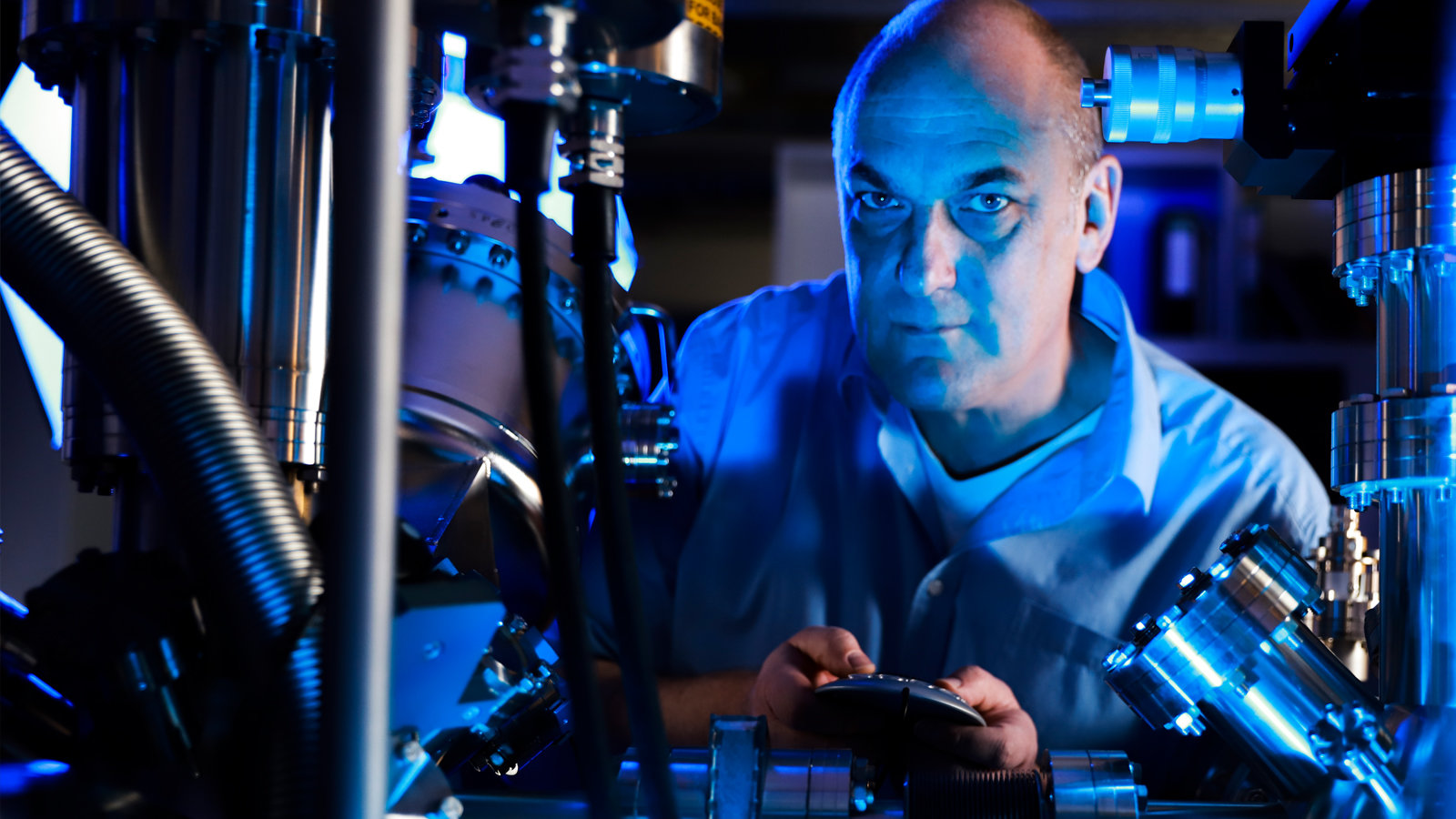It All Depends on Proximity: How Crystal Influences the Resistance of Graphene
A research team, headed by the University of Göttingen but with involvement from Chemnitz University of Technology, observed greater variation than previously assumed – and it was published in Nature Communications
-

Since 2012, Prof. Dr. Thomas Seyller has been Chair of the Professorship of Technical Physics at Chemnitz University of Technology and has focused on fundamental research in the field of “graphene”. Photo: Jacob Müller -

At Chemnitz University of Technology, Prof. Dr. Christoph Tegenkamp researches, among other things, graphene structures. Photo montage: Jacob Müller / Photo: Rico Welzel
(Note: the following announcement, originally made from the Georg-August-Universität Göttingen, contains additions on Prof. Dr. Thomas Seyller and Prof. Dr. Christoph Tegenkamp, who were involved in the project. Published in January 2020 on the University of Göttingen homepage: www.uni-goettingen.de/de/3240.html?id=5795)
(pug) Graphene is often called the miracle material of the future. But in the meantime, scientists are growing perfect graphene layers on square centimeter crystals. A research team from the University of Göttingen, together with Chemnitz University of Technology (Prof. Dr. Thomas Seyller and Prof. Dr. Christoph Tegenkamp) and the PTB Braunschweig, examined the influence of the underlying crystal on the electrical resistance of the graphene. And contrary to previous assumptions, the new results show that this process, known in English as a “proximity effect”, varies greatly from place to place. The results have been published in the journal “Nature Communications”.
The composition of graphene is very simple. It is a single atomic layer of carbon atoms, arranged in a honeycomb structure. The three-dimensional analogue is an integral part of our everyday life, in its simple form as pencil lead. Nonetheless, two-dimensional material graphene could not be synthesised in the laboratory until 2004. In order to determine the electrical resistance on the smallest length scale possible, physicists used a scanning tunnel microscope. This makes atomic structures visible by scanning the surface with a fine metal tip. With the tip of the scanning tunnel microscope, the team also measured the voltage drop and thus the electrical resistance of the graphene sample.
Depending on the position of the measurement, researchers found very different values for the electrical resistance. The reason cited for this is the “proximity effect”. “The spatially varying interaction between graphene and the crystal underneath means that, depending on the position, different electrical resistances are measured,” explains Anna Sinterhauf, lead author and doctoral student at the IV. Physics Institute at the University of Göttingen.
At low temperatures of 8 Kelvin, which corresponds to about -265 Celsius, the team found variations in local resistance of up to 270 percent. “This result suggests that the electrical resistance of exitaxial graphene cannot simply be described with an average, macroscopic value,” explains group leader Dr. Martin Wenderoth. The team believes that the proximity effect could also play an important role for other two-dimensional materials.
Proximity effects in 2-D materials such as graphene, which are caused by the atomically thin layer coming into contact with another material – here, the substrate – are a focus of research being conducted by Prof. Dr. Thomas Seyller from the Professorship of Experimental Physics with a Focus on Technical Physics and Prof. Dr. Christoph Tegenkamp from the Professorship of Solid Surfaces Analysis at Chemnitz University of Technology. The collaboration with the groups from Göttingen and Braunschweig shows how important it is to investigate such interactions in great detail, in order to understand the overall behaviour of quasiparticles in novel quantum materials. “The long-term goal is to modify 2-D materials with the help of proximity effects and to make them usable for an application, for example in electronics or in spintronics,” says Seyller. Seyller has played a large role in laying the foundation for further graphene research.
Original publication: Anna Sinterhauf, et al. Substrate induced nanoscale resistance variation in epitaxial graphene, Nature communications (2020). www.nature.com/articles/s41467-019-14192-0
For further information, please contact Prof. Dr. Thomas Seyller, Professorship of Experimental Physics with a Focus on Technical Physics, Phone: +49 (0)371 531-21770, E-mail: thomas.seyller@physik.tu-chemnitz.de and Prof. Dr. Christoph Tegenkamp, Professorship of Solid Surfaces Analysis, Phone: 371 531-33103, E-mail: christoph.tegenkamp@physik.tu-chemnitz.de.
(Translation: Jeffrey Karnitz)
Mario Steinebach
10.02.2020




